
Jaime Herrera
Violinist with a long history of studio/session work. I am now working on original compositions and arrangements incorporating Latin rhythms. I have written two or three pieces for piano and/or duo piano which I think are pretty good. I have composed several chamber music works as well and five or six string quartet arrangements which are not available anywhere except my library on a well-known site. My photo is a brick wall because it very nicely illustrates my career as a composer.
25 comments By Jaime Herrera
Congratulations for having recovered this fine violin. The one violin I wish would turn up is Morini's Stradivarius, stolen way back in 1995.
Although I was not around back then, I do not recall reading anywhere that any allied countries banned the music of Mozart, Bach, Beethoven, Mendelssohn, Brahms, Handel, Hindemith, Bruch, Haydn, Wagner, or Schumann during the second world war. Were German or Italian performers banned? Were Italian composers banned? Verdi? Puccini? There are so many. How about Japanese artists? As Diego Rivera said long ago: "All art is propaganda." Is it morally excusable to punish an artist for having been born in the wrong country, or at a given time? If so, how severe should the punishment be? The actions which some art organizations have taken lately against anyone closely related to the Russian "regime" during this time of upheaval in Ukraine will surely be debated after the war is over. (I know the Axis powers acted against Jewish artists or other artists they disliked, but did the Allies do the same?)
His life did not have to end this way, although I put no blame on him. This is sad. This death was totally preventable. What was the explanation (I wonder) for the lack of compassion and reasonableness?
I am coming to this article quite late, unfortunately, as I have only recently "discovered" Ms Rashidova, whose playing is beyond superb and very captivating - BRAVO!!! The entire article is wonderful but something in the penultimate paragraph caught my eye: the mystery regarding the absence of recordings by Sauret. Along my journey of research and readings on the subject of music, I have come across quite a few odd, perplexing, or unexplained situations which can only be described as mysteries. This is just one of them. After some thought, I have concluded that there have to be people who know why some things happened in a particular way or didn't happen at all - people who can explain these mysteries, people with intimate knowledge of these events which defy logic.
This action by the sponsors is highly regrettable but not unexpected. When your enemy breaks all your teeth, it is very difficult not to look for ways to punish his extended family. Soon after the second world war, Wagner's and (Richard) Strauss's music was forbidden in Israel. Many Jewish musicians refused to perform in Germany for quite some time - Menuhin was an exception. When Heifetz dared to schedule a performance of the Strauss violin sonata in Israel, he was physically attacked. After Napoleon declared himself Emperor, Beethoven withdrew the dedication of his third symphony to the great man he had once admired.
When playing second in the orchestra, my favorite spot has always been right behind the assistant principal second. One can hear and sense everything from there. Seconds don't often get important solos but sometimes, when it happens, it can be rewarding, such as in Borodin's second symphony, Beethoven's third symphony, and Bartok's Concerto for orchestra. Neville Marriner was a second violinist for quite some time. So was Alexander Schneider (of the Budapest String Quartet) as were Edouard Lalo and Nicolai Berezowsky. These gentlemen later became important musicians in other realms of music.
This is a fascinating subject. It’s been said that Sevcik had over 5,000 students during his long teaching career. He also traveled quite a lot, having taught for long periods in over ten different cities – Prague, Vienna, Pisek, Kharkiv, Salzburg, Kiev, London, Chicago, Boston, and New York. He could do that because he was fluent in seven languages. One of Sevcik’s most prominent pupils was none other than Erica Morini. It is interesting that among the very earliest female concert violinists, the majority were Italian – Maddalena Lombardini, Regina Strinasacchi, Teresa Milanollo, Camila Urso, Teresina Tua, and Gioconda De Vito. Was that because since Vivaldi’s days, Italian audiences had been accustomed to seeing girls playing violin (and other string instruments) in orchestras in orphanages, where Vivaldi (1678-1741) often taught? It has also been said that among Paganini’s (1782-1840) very few pupils, one was a girl – Catarina Calcagno. [I erroneously posted this same comment on the wrong article - my apologies if it caused some confusion. I would have deleted the wrongly-posted comment but I don't know how to do that.]
This is a fascinating subject. It’s been said that Sevcik had over 5,000 students during his long teaching career. He also traveled quite a lot, having taught for long periods in over ten different cities – Prague, Vienna, Pisek, Kharkiv, Salzburg, Kiev, London, Chicago, Boston, and New York. He could do that because he was fluent in seven languages. One of Sevcik’s most prominent pupils was none other than Erica Morini. It is interesting that among the very earliest female concert violinists, the majority were Italian – Maddalena Lombardini, Regina Strinasacchi, Teresa Milanollo, Camila Urso, Teresina Tua, and Gioconda De Vito. Was that because since Vivaldi’s days, Italian audiences had been accustomed to seeing girls playing violin (and other string instruments) in orchestras in orphanages, where Vivaldi (1678-1741) often taught? It has also been said that among Paganini’s (1782-1840) very few pupils, one was a girl – Catarina Calcagno.
I'm glad Mr Rosenberg lived a long, successful, and fruitful life. The violin world is a fascinating one and I'm sure he enjoyed it immensely. (I must confess that every time I hear the words "violin dealer," I can't help but think about the book The Rainaldi Quartet, which does not speak well about violin dealers.)
This situation is so interesting. Now we understand the position German musicians were placed in during the 1930s and 1940s. So many Jewish musicians lost their posts in Germany and hardly anyone complained. The musicians who remained had no choice but to play for the authorities, for which they were LATER condemned although not during the war. For any musician (any artist, actually), getting caught up in politics is very tough indeed. If you wear your loyalties on your sleeve, you will get in trouble. I'm sure the maestro has more than sufficient resources to get by so he is (probably) not terribly worried. I wonder what will be the outcome when this messy situation blows over. Will the maestro want to work in Europe ever again? For things they did long ago, Domingo, Levine, and Dutoit have asterisks by their name - so many others as well. Who knows what will happen? Furtwangler, Bustabo, and Strauss (and many others) are still being talked about. Curiosity: If I'm not terribly mistaken, Polish violinist Wilkomirska studied in Poland (Lodz Academy) in her teens while Poland was occupied. I don't know how she was able to elude the authorities during all that time (she graduated in 1947.)
I can appreciate the points brought out in the article, nevertheless.... I have extensive experience as a session player, but I have NEVER had to sight read more than three pages of music at a time. Technological progress allows for split second splicing which was unthinkable in earlier times - one can now pretty much start and stop at will. This gives musicians breathing space when necessary. Legendary session musicians such as Kaufman, Baker, Nadien, Granat, and Dicterow, can attest to this. Mistakes which in times past used to momentarily derail a session can now be erased and corrected at the push of a button. In any case, although magnificent sight reading skills are obviously necessary for this type of work, composers (and producers) know how far to push their luck. As a matter of fact, composers know how far to push their luck very much depending on which orchestra they are writing for. Not all session orchestras are created equal.
The problem with punishing someone for past sins is, how far does one go to set a demarcation time for issuing indictments or condemnations? 640 BC? 210 CE? 1300? 1450? 1765? 1860? 1938? 1945? 2001? Yesterday? A woman I used to know used to annoy me when she brought up bad things I had done to her 5 years earlier. She used those things like a sword of Damocles! (And since when does this orchestra condemn musicians who have not perpetrated even a fraction of the offenses they committed against a certain group not so long ago?) But, as has been said, he who pays the piper calls the tune!!!!
If I'm not horribly mistaken, I believe that Shumsky actually taught a course on faking. Under the proper circumstances, faking is perfectly acceptable, provided the player's conscience can deal with it, as mine can. If your sense of honesty and honor can't deal with it, then, by all means, practice your heart out on passages that will NEVER be heard, whether in a hall or in the studio. In a section of 22 or 26 fiddles (perhaps fewer), one can fake even delicately transparent Mozart and Beethoven passages, although this would be uncalled for since all of that stuff is pretty easy to play. If you are further back than the second desk, you can get away with it, but anywhere nearer the conductor is an invitation to be dismissed, especially if the conductor happens to be an ex-string player. I encourage everyone to learn to fake, but ONLY when necessary. Choose wisely. It is better to fake intelligently and stay in rhythm, than to try to play every note and mess things up. This is where a thorough knowledge of harmony pays off. If you do it well, not even your stand partner will know.
(I hope this does not violate the terms and conditions - I could not find the terms and conditions anywhere - but if it does, please feel free to delete my comment.)
The art of teaching is fascinating but this article is somewhat perfunctory. It leaves out the fact that Galamian was an autocrat – he even tried to get DeLay fired from Juilliard in 1970 for purely personal reasons. The article leaves out the fact that Galamian became a teacher because he could not establish a concert career – he suffered an impairment known as stage fright. It leaves out the fact that almost all his pupils made fun of him, though not in a malicious way. Professionally, Galamian was to Juilliard what Toscanini was to NBC. Of course, during off hours, they were affable, nice men. It leaves out the fact that Francescatti recommended him for the Curtis job (1944.) By then, Galamian already had 20 years of teaching experience but - except for Reynolds – no famous pupils. The article states that Nadien became a free-lance studio musician after leaving his job at the New York Philharmonic. Actually, Nadien was a session musician (and contractor) for years before he took the concertmaster’s job at the philharmonic. In fact, Nadien took a cut in pay when he took that job.
It is implied that Galamian might be the only teacher who was not made great by his outstanding students. Great students make their teachers great – no exceptions. Also, famous teachers always produce at least two great (and famous) students – one is not enough. The critical element is always the student, not the other way around. These extraordinary teachers are careful in their selection of students too – they will not just accept anyone off the street. It’s like fiddle making, the raw material will make all the difference in the quality of the final product. Nevertheless, it’s a two-way street – students benefit from studying with well-known (well-connected) teachers. This music business is not just about art, it’s about making a good living, if at all possible.
Musicians almost always (exceptions are very rare) have more than two or more teachers. The teacher who comes out on top is the one with the high profile, so, if someone has studied with Wicks and Mann and Borok and Chen and Majerfeld and Song and Kantor and Galamian, it’s Galamian and Juilliard who are mentioned. Paganini, Viotti, Rode, Vieuxtemps, Ysaye, Enesco, Joachim, Milstein, Stern, Heifetz, Markov, Haendel, Kogan, Gitlis, Francescatti, Laredo and so many other concert artists have had dozens of pupils but hardly any became famous – that’s the other side of this coin. It’s ironic that great artists, as teachers, going back as far as Corelli, seldom produce great artists. There is never enough time or enough ability to be both. As Lipsett said regarding concert soloists, there is only so much room at the top – there is a lot more room at the conservatories. On the other hand, Cevcik is said to have taught more than 5,000 students during his pedagogic career. Five or six became very famous (household names in the music universe) and that was enough to put him into the hall of fame of violin pedagogues. The same can be said of Galamian.This is outrageous. An overbearing bureaucratic employee goes berserk and denies a nice violist a great opportunity to make a good living. I can only imagine the emotional trauma that our dear violist suffered. I hope there is a remedy for this kind of insensitive treatment by the airline. Our violist should be financially compensated - find a competent attorney!!
Unless Kaden did this to the bass himself, nothing can account for the damage other than irresponsible handling by Southwest Airlines employees. Shameful it is. I hope they pay for a restoration or a new instrument. Best wishes!!
I was present at a rehearsal with Harrell and his wife when they played the Brahms Double. There was an incident which I won't relate here, but since this was prior to 2008, I'm guessing the cello he was playing was the real deal, the real Montagnana, and yes, it sounded really good. I'm glad he had a copy made.
There is nothing wrong with being self-taught - Albert Sammons once declared that he was largely self-taught and he seems to have done just fine. If I'm not terribly mistaken, I think Ricci also said the same thing. Kurganov's amazing feat can be better appreciated when we consider that by the time Milstein was 14 years old, he was basically done with lessons!!
It is not only informative, but entertaining. I think it's important to point that out. The video is not dry and boring in the least. Bravo!!!
Something like this can easily bring tears to a mother or father playing with their progeny, especially if they are just of tender age. Kogan was often accompanied by his daughter, too. Now also Vengerov and Meyers. Nice and sweet and noble - to be cherished forever.

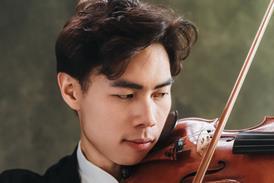
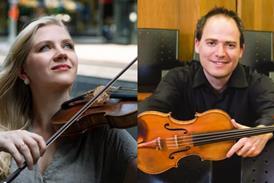
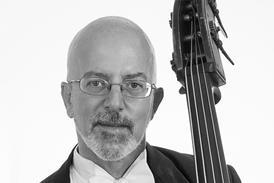

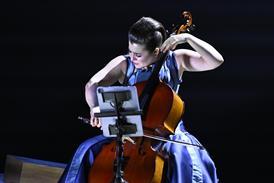
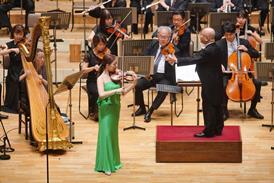
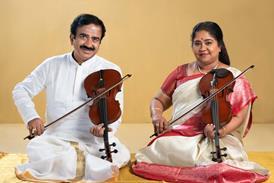

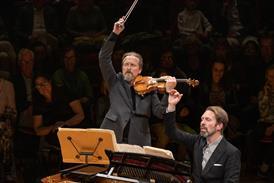
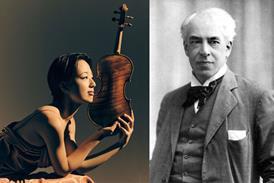
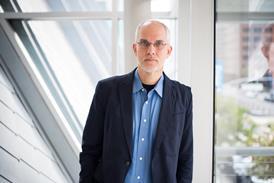

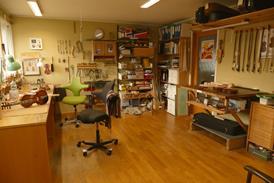
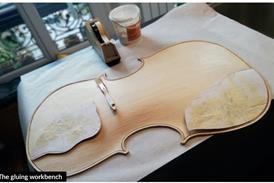

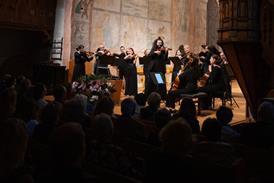

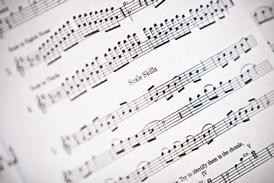
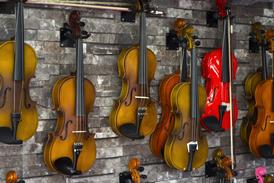

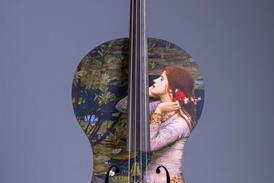
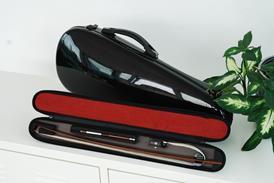

























Commented on: 20 April 2022
Missing €100,000 violin found dumped by a Parisian trash can